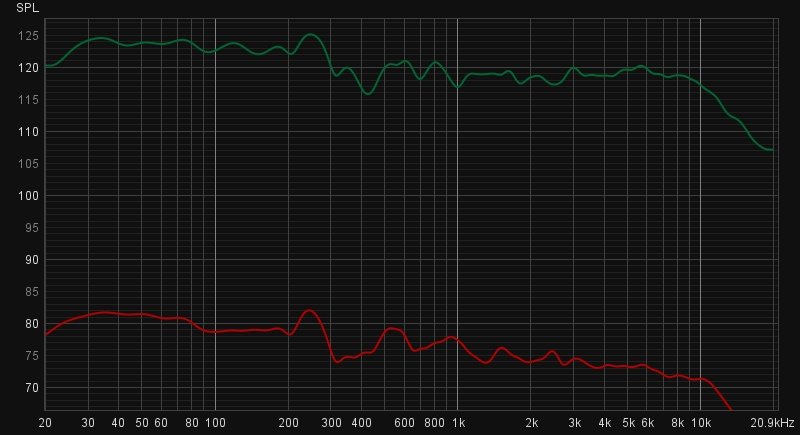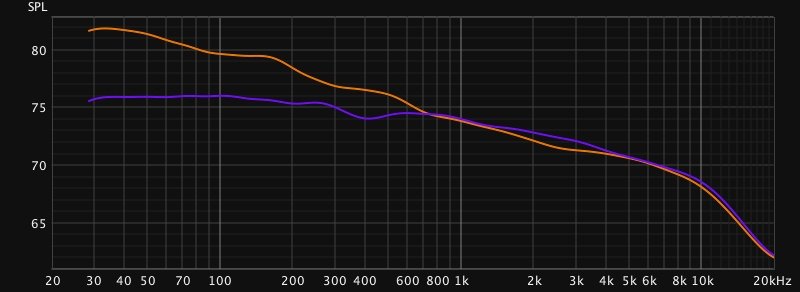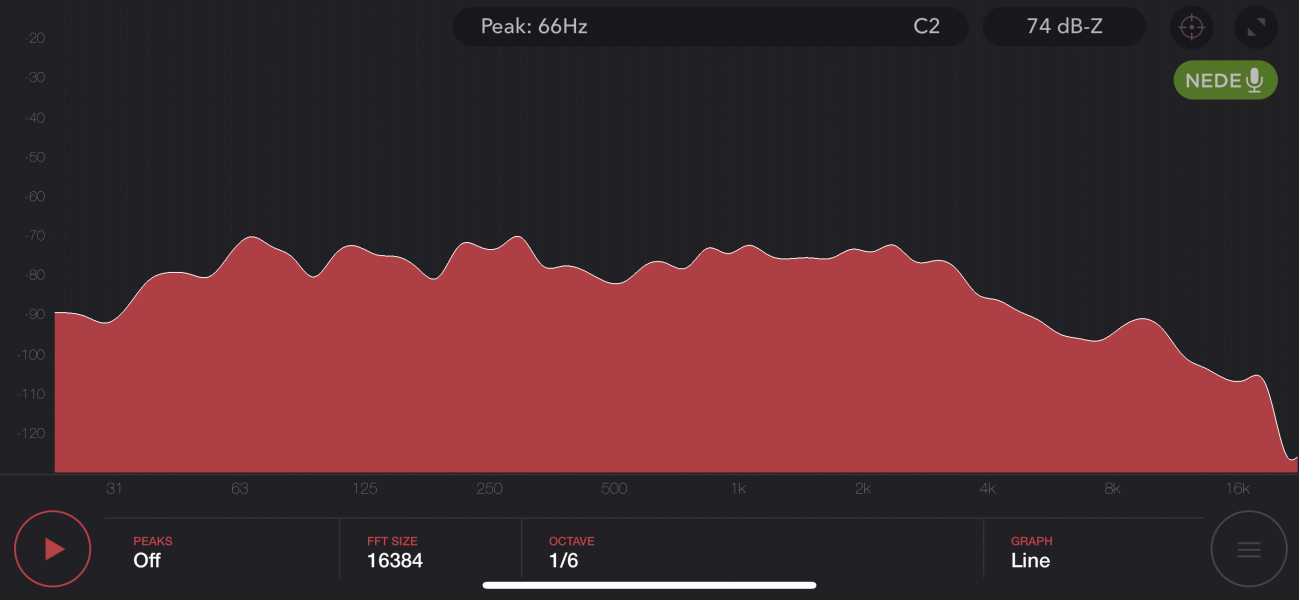Below you can see two measurements I took last night. This was taken at the listening position, which is 10 feet back from the center speaker and about 12 feet from the woofer stacks. The room is 12 feet wide by 20 feet long and about 7.5 feet tall. The green curve on top doesn't sound as good as the red one below. I had noticed my system was sounding really good the night before. When I took the measurement last night I felt it wasn't sounding as good, and the curve I saw was not what I expected. It's extremely flat from about 30 to 200, and then jumps down and is flat again from about 600 to 6K. I recalled it having a more continuous downward slope. So I restarted all the digital equipment and re-measured. The red curve is the measured result after restart and it sounds good and looks right. I should note I took these measurements repeatedly before and after the reset, and they stayed consistent with slight changes in the microphone position or moving things around in the room. So I know it's the sound coming from the speakers that's changing. This confirmed something I suspected might have been happening, and led me to all kinds of confused notions about different amps, digital sources, etc. sounding different. Now I don't know. It might just be that restarting the system fixes something that went off. Over the years I've noticed very obvious distortions creeping in from time to time that require restarting or reconnecting things to get it straightened out. It made me wonder if perhaps more subtle things might also be happening and messing with my mind. I think this verifies it. I can't for the life of me understand why this frequency response change would occur but when software is involved the possibilities are limitless.
I use cheap digital equipment. I'm not sure if all cheap digital equipment has problems like this but I'd be willing to pay more for stability.

I use cheap digital equipment. I'm not sure if all cheap digital equipment has problems like this but I'd be willing to pay more for stability.








